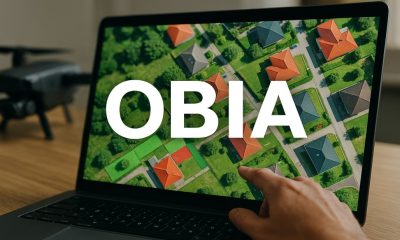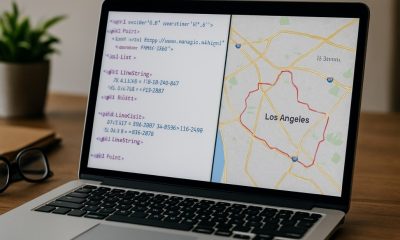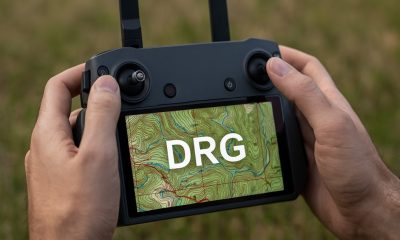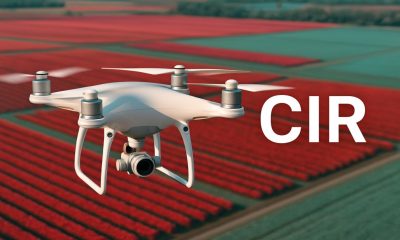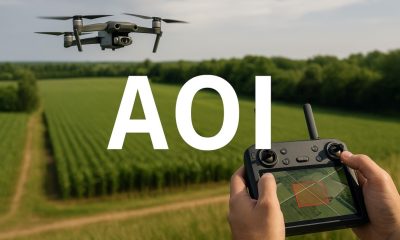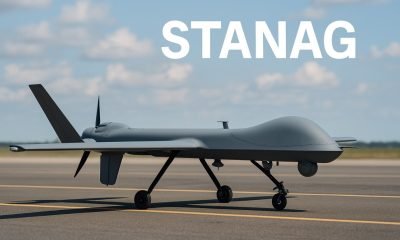- Acronym Guide
- AAM
- ABS
- AC
- ACAS
- ADS-B
- AFAC
- AGL
- AI
- AIM
- ALS
- AM
- AMA
- ANSP
- AOI
- APPI
- AUV
- AUVSI
- ARPAS-UK
- ASTM
- ATC
- BVLOS
- CAA
- CAAC
- CAB
- CASA
- CATT
- CBO
- CBR
- CBRN
- CDMA
- CDR
- CFR
- CIR
- COA
- COMINT
- CORS
- COTP
- COTR
- CPTED
- CV
- C2
- DAA
- DEM
- DFI
- DFS
- DGCA
- DHS
- DOD
- DPA
- DPEs
- DRG
- DRO
- DSM
- DSMX
- DSP
- DSSS
- DTM
- EASA
- EFT
- EO
- EOD
- EO/IR
- ELINT
- EMI
- ESC
- EVLOS
- eVTOLs
- FAA
- FCC
- FCS
- FHSS
- FICCI
- FLIR
- FOB
- FOV
- FPS
- FPV
- GBDAA
- GCP
- GCS
- GDPR
- GML
- GNSS
- GPS
- GSD
- GVC
- HDR
- HOGE
- IACRA
- ICAO
- ICS
- IMU
- INS
- IR
- ISA
- ISR
- ITU
- JARUS
- LAAMS
- LAANC
- LAATM
- LAI
- LBA
- LIDAR
- LOS
- LSALT
- MAC
- MAVLink
- MLIT
- MMS
- MSL
- MTOM
- NDAA
- NCSL
- NFZ
- NIST
- NMEA
- NOTAM
- NPA
- NPRM
- NTIA
- OBIA
- OEM
- OFDM
- OOP
- PASM
- PAV
- PCV
- PdM
- PEC
- PIC
- PID
- PIPL
- PLD
- PM
- PN
- PPK
- PPS
- PSM
- PWM
- UAM
- UAOP
- UAS
- UASTM
- UAV
- UCAVs
- UHD
- UHF
- USV
- UTM
- RAIM
- RCC
- RCS
- RFI
- ReOC
- RePL
- RMS
- ROI
- RPAS
- RPC
- RTH
- RTK
- SaR
- SAR
- SARP
- SBAS
- S.Bus
- SBIR
- SEDENA
- SfM
- SFOC
- SIGINT
- SLAM
- SMS
- SORA
- STANAG
- STTR
- sUAS
- TCAS
- TCCA
- TFR
- TIN
- TOF
- TP
- TPS
- TSA
- VHF
- VLOS
- VTOL
Drone Acronyms
What is NFZ (No Fly Zone) & How Does it Work?
By
Jacob StonerTable Of Contents

Definition
An NFZ (No Fly Zone) is a designated area where drone operations are restricted or prohibited due to safety, security, or regulatory reasons. No Fly Zones are established by aviation authorities, government agencies, or private entities to prevent drones from flying in areas where they could pose risks to public safety, privacy, or national security. Examples include airspace around airports, military installations, critical infrastructure, and certain public events.
Usage
NFZs are crucial in ensuring the safety of air traffic and the security of sensitive areas. Drone operators must be aware of NFZs within their planned flight paths to avoid penalties or operational disruptions. Many modern drones are equipped with geofencing technology that automatically restricts flights in NFZs, preventing unauthorized access to restricted airspace.
Relevance to the Industry
NFZs play a significant role in managing the safe integration of drones into national airspace systems. For drone manufacturers, compliance with NFZ regulations involves embedding geofencing capabilities into their products. For operators, understanding and respecting NFZs is essential for legal and responsible flight operations. NFZ regulations vary by country, requiring operators to stay informed about local airspace restrictions.
How Does a No Fly Zone (NFZ) Work?
Definition and Designation of NFZs:
- Establishing Restricted Airspace:
- Government and Regulatory Authority Designation: No Fly Zones (NFZs) are designated by aviation authorities, such as the FAA (Federal Aviation Administration) in the United States, EASA (European Union Aviation Safety Agency) in Europe, and similar bodies worldwide. These zones are established to protect sensitive areas, such as airports, government buildings, military installations, and critical infrastructure.
- Temporary and Permanent NFZs: NFZs can be permanent, such as those around airports, or temporary, such as those set up for major public events, emergencies, or VIP visits. Authorities notify operators about temporary NFZs through notices like NOTAMs (Notices to Airmen) or local advisories.
- Airspace Classification:
- Controlled vs. Restricted Airspace: NFZs often overlap with controlled airspace where manned aircraft operate. In these cases, drones are prohibited to prevent interference with air traffic. Restricted zones may also include areas around sensitive sites, such as power plants or national landmarks, where drone activity could pose security or privacy risks.
Technology and Implementation:
- Geofencing in Drones:
- How Geofencing Works: Geofencing technology uses GPS data to create virtual boundaries around NFZs. When a drone approaches or attempts to enter an NFZ, the geofencing system automatically restricts its flight. This prevents unauthorized access and ensures compliance with regulations.
- Built-In Maps and Updates: Drone manufacturers, such as DJI, include NFZ maps in their flight control software. These maps are updated regularly to reflect changes in airspace regulations. Operators are alerted when they are near an NFZ, and the drone’s system may prevent takeoff or restrict its movement within the restricted area.
- Manual Permissions and Overrides:
- Authorization for Entry: In some cases, drone operators can apply for permission to enter NFZs for specific purposes, such as infrastructure inspection or public safety missions. Authorization is granted through government agencies or aviation authorities, and operators receive a digital key or code to unlock restricted areas within the drone’s geofencing system.
- Temporary Overrides: For approved operations, manufacturers may allow temporary overrides of geofencing restrictions. This requires proof of authorization and a safety review to prevent misuse.
Safety and Enforcement Measures:
- Real-Time Monitoring:
- Airspace Surveillance Systems: Aviation authorities and private organizations use radar, remote sensing, and drone detection systems to monitor airspace for unauthorized drone activity. Advanced systems can identify the location, altitude, and operator of a drone that enters an NFZ.
- Automatic Alerts: When unauthorized drone activity is detected in an NFZ, alerts are sent to authorities for immediate response. This helps mitigate potential risks, such as interference with aircraft or threats to public safety.
- Enforcement and Countermeasures:
- Penalties for Violations: Operators who enter NFZs without authorization face penalties, including fines, confiscation of the drone, or legal action. Penalty severity depends on the location and potential risks involved.
- Counter-Drone Technologies: In high-security NFZs, such as military bases or airports, authorities may deploy counter-drone measures, including signal jamming, drone interception, or disabling technologies. These measures ensure rapid response to unauthorized intrusions.
Operator Responsibilities:
- Pre-Flight Planning:
- Checking NFZ Maps: Operators must check for NFZs before flying. Tools like the FAA’s B4UFLY app, DJI’s FlySafe system, or national aviation maps provide detailed information on restricted areas.
- Understanding Temporary Restrictions: Operators should stay informed about temporary NFZs, such as those established for emergencies or events, by checking NOTAMs or local advisories.
- Staying Compliant:
- Adhering to Regulations: Compliance with NFZ restrictions is critical for safe and legal drone operations. Operators should respect geofencing alerts and avoid attempting to bypass them without proper authorization.
- Education and Training: Drone operators must understand airspace classifications and NFZ regulations to avoid accidental violations. Many drone certification programs include training on identifying and respecting NFZs.
By combining regulatory oversight, geofencing technology, and operator compliance, No Fly Zones (NFZs) ensure safe integration of drones into airspace systems while protecting sensitive areas and minimizing risks to public safety.
Example in Use
“The drone’s geofencing system automatically prevented it from entering the No Fly Zone (NFZ) near the airport, ensuring compliance with aviation regulations.”
Frequently Asked Questions about NFZ (No Fly Zone)
1. What constitutes a No Fly Zone?
Answer: No Fly Zones are areas where drone operations are restricted or prohibited. Examples include:
- Airports: To prevent interference with manned aircraft.
- Military Installations: For national security reasons.
- Public Events: To ensure safety and prevent disruptions.
2. How can drone operators identify NFZs?
Answer: Drone operators can identify NFZs by:
- Checking Aviation Maps: Resources like airspace maps from national aviation authorities highlight restricted areas.
- Using Mobile Apps: Apps like DJI Fly, Airmap, or B4UFLY provide real-time information about NFZs.
- Built-In Geofencing: Many drones have geofencing systems that alert or restrict operators from entering NFZs.
3. What happens if a drone flies into an NFZ?
Answer: Consequences of flying into an NFZ include:
- Automatic Flight Restriction: Geofencing technology may prevent the drone from entering.
- Legal Penalties: Operators may face fines, drone confiscation, or other legal actions.
- Safety Risks: Entering an NFZ, especially near airports or critical infrastructure, could endanger public safety and lead to collisions.
For examples of these acronyms visit our Industries page.
As the CEO of Flyeye.io, Jacob Stoner spearheads the company's operations with his extensive expertise in the drone industry. He is a licensed commercial drone operator in Canada, where he frequently conducts drone inspections. Jacob is a highly respected figure within his local drone community, where he indulges his passion for videography during his leisure time. Above all, Jacob's keen interest lies in the potential societal impact of drone technology advancements.
